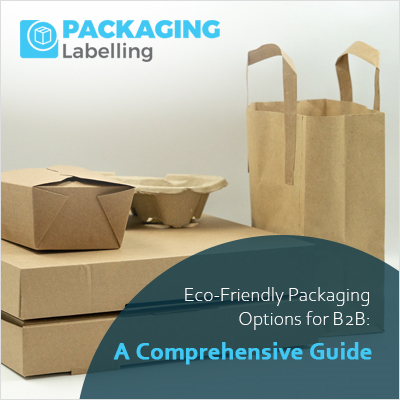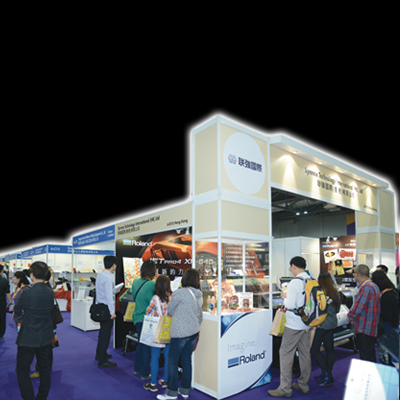Eco-Friendly Packaging Options for B2B: A Comprehensive Guide

Introduction:
In an era where environmental sustainability is a key concern, businesses are increasingly adopting eco-friendly practices, and packaging is no exception. B2B (business-to-business) transactions, with their large-scale operations, have a significant impact on the environment. This guide explores various eco-friendly packaging options for B2B businesses, emphasizing sustainable choices that align with corporate responsibility and environmental consciousness.
I) Understanding Eco-Friendly Packaging:
a. Definition: Eco-friendly packaging encompasses materials and practices designed to minimize the environmental impact associated with packaging throughout its entire lifecycle. This holistic approach considers not only the production and use of packaging but also its disposal and potential effects on ecosystems. The goal is to create packaging solutions that are environmentally responsible and sustainable.
b. Key Principles:
i. Recyclability: - Eco-friendly packaging prioritizes materials that can be easily recycled. This involves using materials like paper, cardboard, glass, and certain types of plastics that have established recycling processes. - Designing packaging with recycling in mind includes minimizing the use of mixed materials, making disassembly easier, and providing clear instructions for consumers.
ii. Biodegradability: - Biodegradable packaging materials break down naturally over time, reducing the accumulation of waste in landfills. This is particularly important for single-use items. - Common biodegradable materials include plant-based plastics, certain types of paper, and packaging made from organic materials like cornstarch or sugarcane.
iii. Reduced Carbon Footprint: - Eco-friendly packaging aims to minimize the carbon footprint associated with its production, transportation, and disposal. This involves using energy-efficient manufacturing processes, sourcing materials locally, and adopting sustainable transportation practices. - Lightweight materials and efficient design also contribute to lower carbon emissions during transportation.
iv. Use of Renewable Resources: - Opting for packaging materials derived from renewable resources ensures that the environmental impact is balanced by the ability of these resources to regenerate. - Examples of renewable resources include bamboo, sugarcane, and certain types of bioplastics made from plant-based sources like corn or potatoes.
By adhering to these key principles, businesses can make significant strides toward creating packaging that is not only functional and appealing but also environmentally responsible, aligning with the broader goals of sustainability and corporate social responsibility.
II) Types of Eco-Friendly Packaging Materials:
a. Recycled Materials:
Definition: Recycled materials involve the use of post-consumer or post-industrial waste to create new packaging products. This helps divert waste from landfills and reduces the need for new raw materials.
Examples: Recycled paper, cardboard, and plastics are commonly used in eco-friendly packaging. This can include corrugated cardboard boxes, paperboard packaging, and recycled PET (rPET) plastics.
b. Biodegradable Materials:
Definition: Biodegradable materials are designed to break down naturally through biological processes, reducing their impact on the environment. These materials often decompose into natural substances without leaving harmful residues.
Examples: Packaging made from biodegradable materials includes items such as cornstarch-based plastics, sugarcane bagasse packaging, and certain types of biodegradable films. These materials are particularly beneficial for single-use items.
c. Sustainable Forestry:
Definition: Sustainable forestry encompasses the conscientious management of forests, ensuring that the extraction of wood and paper products adheres to environmentally and socially responsible practices. This commitment is reinforced through certification processes that verify the implementation of sustainable forestry practices.
Examples: Packaging made from responsibly sourced and certified wood or paper, such as those certified by the Forest Stewardship Council (FSC), is considered eco-friendly. These materials help prevent deforestation and promote the conservation of biodiversity.
Utilizing a combination of these eco-friendly materials allows businesses to address different aspects of sustainability in their packaging choices. By incorporating recycled content, biodegradable options, and sustainably sourced materials, B2B companies can contribute to a more circular and environmentally conscious approach to packaging. Additionally, it demonstrates a commitment to reducing the overall environmental impact of their operations.
III) Innovative Packaging Solutions:
a. Mushroom Packaging:
Description: Mushroom packaging, also known as mycelium-based packaging, harnesses the root structure of fungi (mycelium) to produce a robust and biodegradable packaging material. This innovation serves as an eco-friendly substitute for traditional styrofoam and other non-biodegradable packing materials.
Benefits:
- Biodegradability: Packaging made from mycelium naturally breaks down, mitigating its environmental footprint.
- Customization: It can be shaped into various forms and dimensions, offering adaptability for diverse packaging requirements.
- Renewable Resource: Mycelium thrives on agricultural waste, transforming it into a valuable and sustainable resource.
b. Edible Packaging:
Description: Edible packaging involves creating films or coatings from edible materials like seaweed or starch. This innovative solution not only reduces waste but also provides a unique and interactive customer experience.
Benefits:
- Zero Waste: Consumers can eat or safely dispose of the packaging, eliminating waste entirely.
- Novelty: Edible packaging can be used to enhance the appeal of food products, offering a memorable and sustainable experience.
- Biodegradability: If not consumed, edible packaging typically breaks down quickly and harmlessly.
c. Water-Soluble Packaging:
Description: Water-soluble packaging materials are designed to dissolve in water, Water-soluble packaging materials are intentionally crafted to dissolve in water, eliminating the necessity for traditional disposal methods. These versatile materials find applications in various contexts, especially in the development of single-use items.
Benefits:
- Reduced Landfill Waste: By significantly diminishing waste accumulation in landfills, water-soluble packaging contributes to a more sustainable waste management system.
- Convenience: Convenience is paramount, particularly for items like detergent pods or single-use sachets that effortlessly dissolve upon contact with water, simplifying the disposal process.
- Environmental Impact: Dissolving packaging materials in water ensures that no persistent waste is left behind, aligning with eco-friendly principles and minimizing environmental impact.
These pioneering water-soluble packaging solutions underscore the potential for both creativity and sustainability within the packaging industry. Through the adoption of such alternatives, B2B businesses can actively engage in reducing the environmental footprint associated with packaging. Beyond the environmental advantages, the incorporation of these solutions can serve as a distinct selling point, setting products apart in the market and appealing to consumers who prioritize eco-friendly practices.
IV) Customization and Branding:
a. Eco-Friendly Printing
Description: Eco-friendly printing involves the use of inks and printing processes that have a reduced environmental impact compared to traditional methods. Soy-based or vegetable-based inks are popular choices for their sustainability.
Benefits:
- Reduced VOC Emissions: Vegetable-based inks emit fewer volatile organic compounds (VOCs) during the printing process, improving air quality.
- Biodegradability: Soy-based and vegetable-based inks are more easily biodegradable than petroleum-based inks.
- Renewable Resources: These inks are derived from renewable resources, such as soybeans or vegetables, reducing reliance on fossil fuels.
b. Sustainable Labeling:
Description: Sustainable labeling involves using eco-friendly materials for product labels, contributing to the overall sustainability of the packaging. This includes choosing recycled materials or those with minimal environmental impact.
Benefits:
- Recycled Content: Labels made from recycled materials help reduce the demand for new raw materials.
- Eco-Friendly Adhesives: Using adhesives with minimal environmental impact ensures that the entire label is environmentally responsible.
- Brand Image: Sustainable labeling aligns with a company's commitment to environmental responsibility, enhancing its brand image.
By incorporating eco-friendly printing and sustainable labeling practices, B2B businesses can extend their commitment to sustainability beyond the primary packaging materials. These choices not only contribute to a more environmentally friendly product but also align with consumer expectations for transparency and ethical practices. As part of the overall branding strategy, these practices communicate a commitment to environmental responsibility, potentially fostering brand loyalty among environmentally conscious customers.
V) Logistics and Supply Chain Considerations:
a. Lightweight Packaging:
Description: Opting for lightweight packaging materials involves choosing materials that provide the necessary strength and protection for products while minimizing overall weight. This decision has significant implications for transportation-related emissions and costs.
Benefits:
- Reduced Carbon Footprint: Lighter packaging contributes to lower transportation-related emissions, as less energy is required to transport goods.
- Cost Savings: Lower weight can lead to reduced shipping costs, contributing to overall cost savings in the supply chain.
- Efficiency: Lightweight packaging is easier to handle, making the entire logistics process more efficient.
b. Returnable and Reusable Packaging:
Description: Implementing a system of returnable and reusable packaging involves designing packaging that can be returned to the manufacturer or distributor, cleaned, and reused for multiple cycles. This approach reduces the need for single-use packaging.
Benefits:
- Waste Reduction: Reusable packaging minimizes the generation of waste, especially in industries with high packaging turnover.
- Cost Efficiency: While initial investment in reusable packaging may be higher, the long-term cost savings can be substantial as it reduces the need for continuous repurchasing of disposable packaging.
- Sustainable Practices: Encouraging the return and reuse of packaging aligns with sustainable business practices and can enhance a company's environmental stewardship.
Considering these logistics and supply chain considerations is crucial for B2B businesses aiming to minimize their environmental impact. By choosing lightweight materials and implementing systems for returnable and reusable packaging, companies can contribute to the reduction of overall waste generation and transportation-related emissions. This approach not only aligns with environmental sustainability but also presents economic advantages and promotes responsible resource management throughout the supply chain.
VI) Regulatory Compliance:
a. Familiarity with Regulations:
Importance: Staying informed about local and international regulations regarding eco-friendly packaging is crucial for B2B businesses to ensure compliance with environmental standards and avoid legal issues.
Considerations:
- Packaging Laws: Understanding laws related to packaging materials, labeling, and waste management in the regions where the business operates is essential.
- Extended Producer Responsibility (EPR): Some regions enforce EPR regulations, requiring businesses to manage the environmental impact of their packaging throughout its lifecycle.
b. Certifications:
Importance: Obtaining certifications for eco-friendly packaging verifies that the packaging materials meet specific environmental standards. This can enhance the credibility of the business and its commitment to sustainability.
Examples of Certifications:
- Forest Stewardship Council (FSC): Certification ensures that wood and paper products come from responsibly managed forests, promoting sustainable forestry practices
- Cradle to Cradle (C2C): This certification evaluates a product's environmental performance throughout its life cycle, encouraging the design of products with minimal environmental impact.
Ensuring regulatory compliance and obtaining relevant certifications demonstrates a commitment to environmental responsibility and sustainability. This can be particularly important in industries where eco-friendly practices are emphasized, and customers prioritize products from environmentally conscious suppliers. Additionally, adherence to regulations and certifications can mitigate the risk of legal challenges and contribute to positive relationships with regulatory authorities and stakeholders.
VII) Cost Considerations:
a. Long-Term Savings:
Rationale: While the initial costs of adopting eco-friendly packaging may be higher than traditional options, businesses can realize significant long-term savings through various avenues.
Considerations:
- Waste Disposal Costs: Eco-friendly packaging often results in less waste, reducing disposal costs associated with traditional, non-recyclable materials.
- Customer Loyalty: As consumer awareness of environmental issues grows, businesses that embrace sustainable practices, including eco-friendly packaging, may gain customer loyalty and a competitive edge.
b. Government Incentives:
- Opportunity: Some regions and governments offer incentives, subsidies, or tax breaks to businesses that adopt sustainable practices, including the use of eco-friendly packaging.
Examples of Incentives:
- Tax Credits: Businesses may receive tax credits for investing in environmentally friendly practices, helping offset initial costs.
- Grants: Governments may provide grants or financial assistance to support the transition to sustainable packaging.
- Subsidies: Subsidies on certain materials or technologies used in eco-friendly packaging can make these options more economically viable.
Understanding the potential long-term savings and taking advantage of government incentives can make the adoption of eco-friendly packaging more economically feasible for B2B businesses. While the upfront costs may seem higher, a strategic and holistic approach to sustainability can result in overall financial benefits, improved brand reputation, and increased customer satisfaction. Additionally, keeping abreast of evolving government policies and incentives ensures that businesses can take advantage of emerging opportunities in the sustainability landscape.
VIII) Communication and Marketing:
a. Green Messaging:
- Importance: Effectively communicating eco-friendly initiatives through marketing and branding is crucial for building a positive brand image and attracting environmentally conscious customers.
Strategies:
- Highlighting Sustainable Practices: Showcase specific eco-friendly packaging choices, such as the use of recycled materials, biodegradable options, or sustainable sourcing.
- Telling a Story: Share the company's journey toward sustainability, emphasizing milestones, challenges overcome, and future goals.
- Visual Representation: Utilize visual elements, such as eco-friendly logos or symbols, to convey the commitment to sustainability.
b. Transparency:
- Importance: Transparent communication about the environmental impact of packaging builds trust with stakeholders, including customers, investors, and partners.
Key Elements:
- Environmental Metrics: Provide clear and accurate information about the environmental benefits of eco-friendly packaging, such as reduced carbon footprint or materials sourced from sustainable forests.
- Supply Chain Transparency: Communicate efforts to ensure transparency in the supply chain, from sourcing raw materials to the end-of-life of the packaging.
- Challenges and Improvements: Acknowledge any challenges faced in the journey toward sustainability and outline continuous improvement strategies.
Effective communication and marketing strategies contribute to the success of eco-friendly initiatives by creating a positive brand perception. Customers are increasingly valuing environmentally conscious practices, and a strong green messaging strategy can differentiate a business in the market. Transparency builds trust with stakeholders and demonstrates a commitment to accountability and responsible business practices. By integrating these communication strategies, B2B businesses can not only attract environmentally conscious customers but also strengthen relationships with partners and investors who prioritize sustainability.









